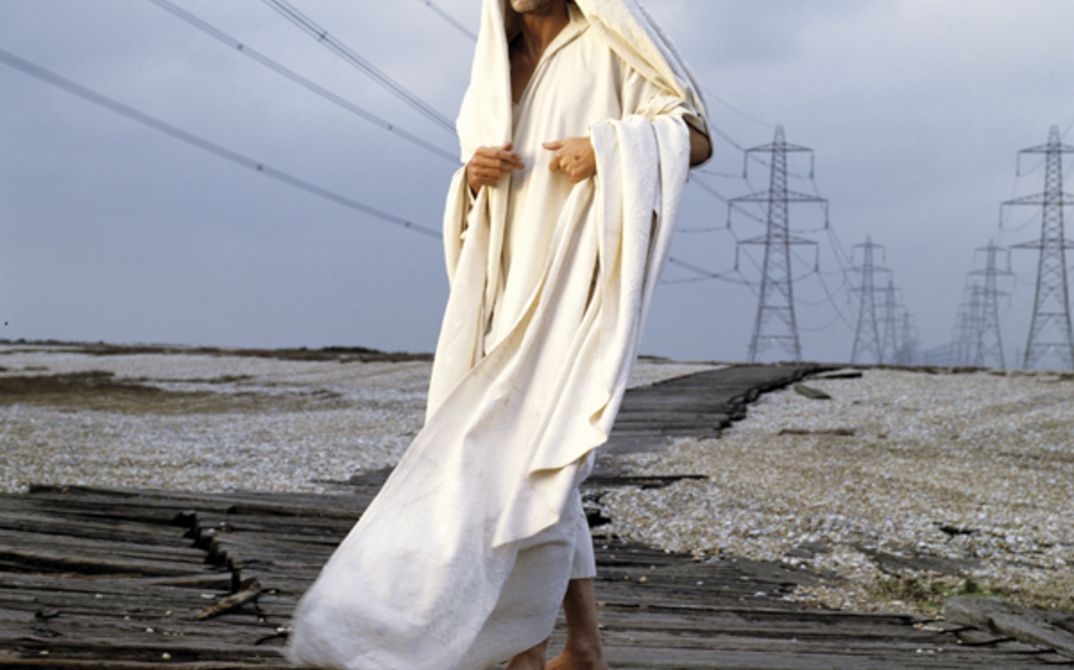In the midst of fishermen’s huts on a gravel beach of the south coast of English, in the direct vicinity of an atomic power station and a military basis, stands Prospect Cottage: the last residence of British artist, activist, and filmmaker Derek Jarman, who died in 1994 from the consequences of an HIV infection. “I waited a lifetime to build my garden. I built my garden with the colours of healing on the sepia shingle at Dungeness.” (Chroma: Book of Colour, 1993).
The exhibition project The Garden. Cinematics of the Soil is dedicated to the life of Derek Jarman. His film of the same name THE GARDEN (1990), in which he examines the garden as a utopian place of collaborative coexistence of humankind and nature, but also as a liminal space between reality and fantasy, healing and destruction, hope and grief, as well as Prospect Cottage itself, form the starting point for a contemporary exploration of the essential questions of our society and its future: environmental pollution and disease, collectivity, and the power of resistance.
Following a first, open-air screening on 23.7., THE GARDEN will also screen at Arsenal (26.7., 2., 9. & 16.8.), where THE LAST OF ENGLAND and BLUE are also being shown, two further films in which Jarman turns the personal into cinematographic form. THE LAST OF ENGLAND (1987) is a rigorous settling of scores with the country of Margaret Thatcher, a flaming protest in which people lose themselves in old society rituals akin to horror events. (28.7. & 11.8.). For the entire duration of the film, BLUE (1993) shows an unchanging blue, while different voices, including Jarman’s own, tell stories, recite poems and deliver dialogues from his life following his infection with HIV (4. & 18.8.).
In the garden of silent green, we are showing two films that premiered at the Berlinale Forum the same year as THE GARDEN: Peter Adair’s ABSOLUTELY POSITIVE (1991) consists of conversations with eleven men and women who tested positive for HIV and are grappling with life, disease, and death. Beforehand, we’re showing AIDSWALK by Milena Gierke, which was made in Central Park in 1995. (8.8.) POISON (1990), the debut film by Todd Haynes, was inspired by texts by Jean Genet and is made up of three parts: Hero, Horror, and Homo. We’re accompanying the film with AUS DER FERNE – THE MEMO BOOK by Matthias Müller (1989), a farewell to a friend who died of AIDS (13.8.). To bring things to close, a little-known gem by Derek Jarman: GARDEN OF LUXOR (BURNING THE PYRAMIDS) (1973) is showing together with films by Matthias Müller, Maria Thereza Alves, Malak Helmy, and Mariam Mekiwi. (21.8.) (stss)
The exhibition by silent green Film Feld Forschung can be seen from 22.7. bis 22.8. in the Betonhalle of silent green. The artists involved include Mareike Bernien / Alex Gerbaulet, Kerstin Schroedinger / Oliver Husain, Inas Halabi, Philip Scheffner, Peter Cusack, Howard Sooley, Dagie Brundert, CHEAP Art Collective. Artistic director: Bettina Ellerkamp, Jörg Heitmann, Stefanie Schulte Strathaus. Talks: Marc Siegel. With support from James Mackay, Amanda Wilkinson Gallery and Keith Collins Will Trust. (stss)



